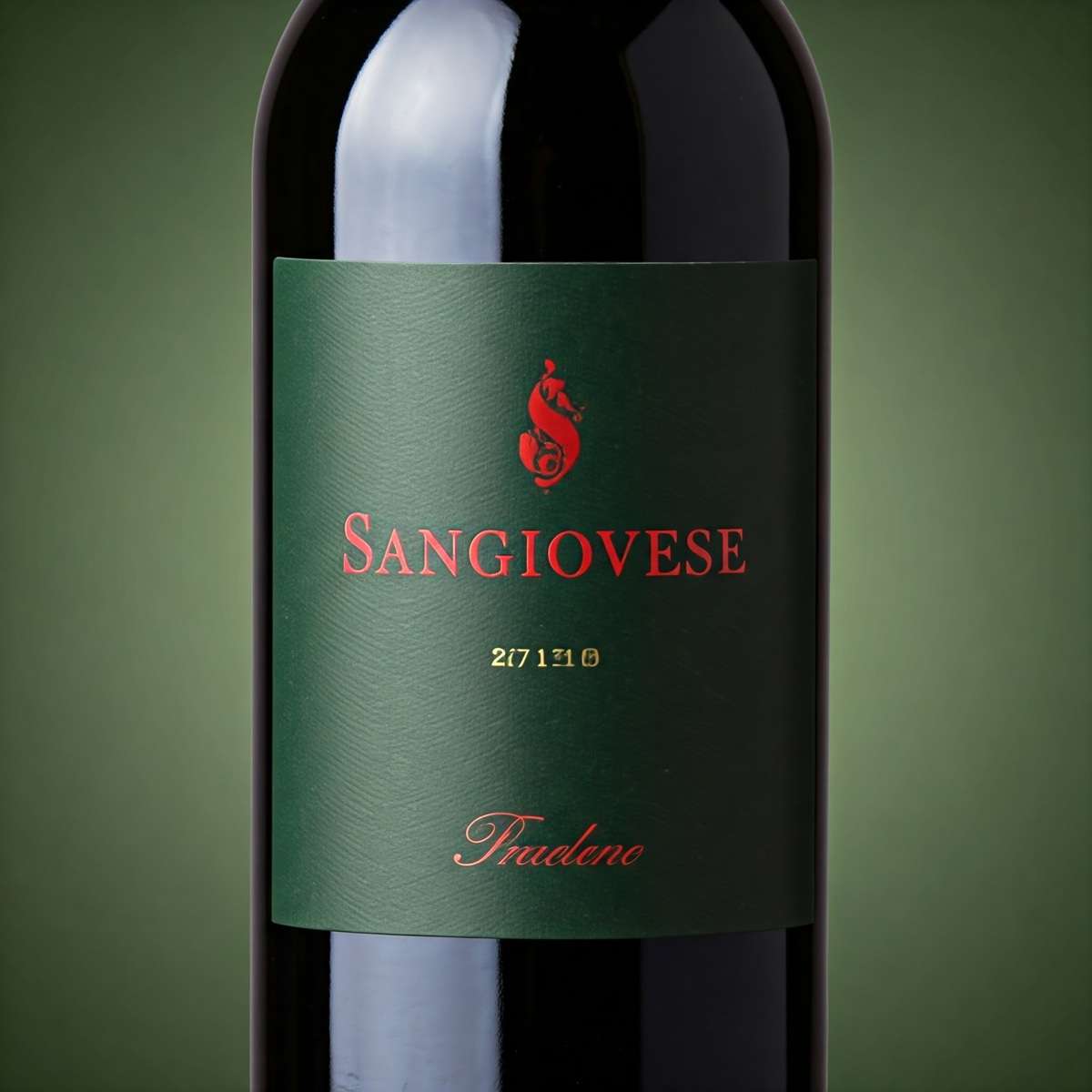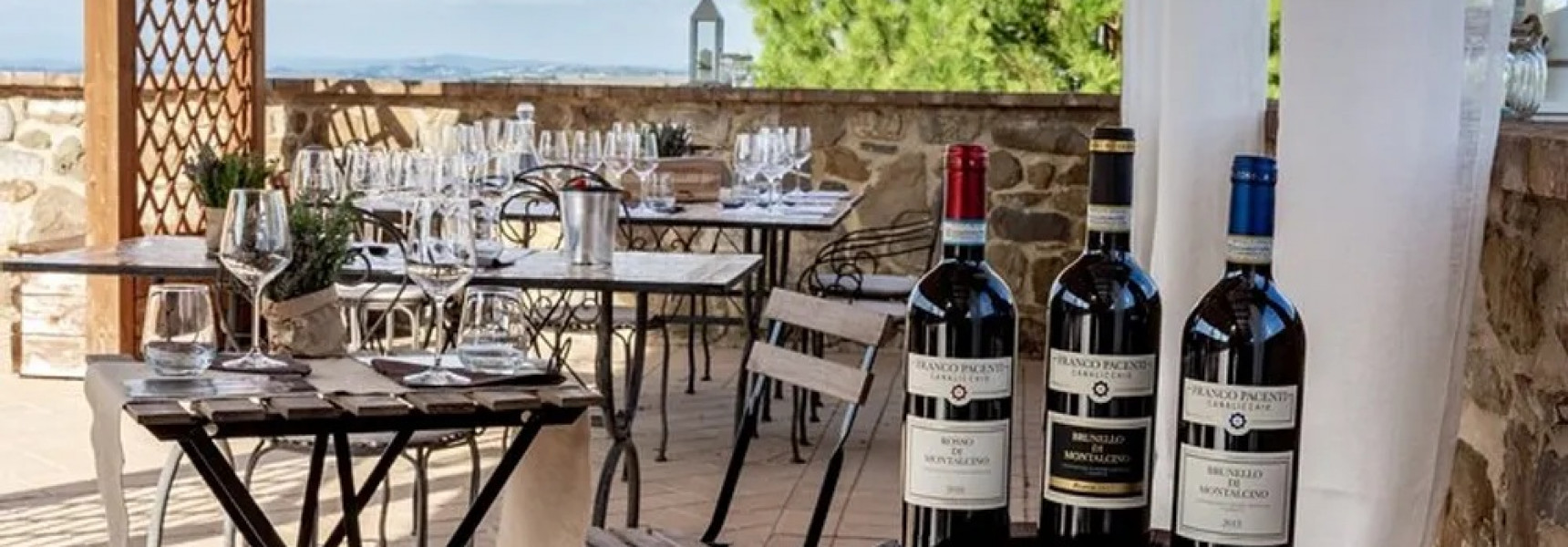Food and Drink Tours
Tuscany
Published: 14 Dec 2024
Tuscany, one of Italy’s most iconic regions, is a global epicentre of wine culture. Its rolling hills, medieval villages, and Mediterranean climate provide the perfect backdrop for some of the world’s finest wines. This article delves into the unique aspects of Tuscan wine, offering a general guide and exploring intriguing facts about this celebrated beverage.
Introduction to Tuscan Wine
Tuscany’s wine tradition dates back thousands of years, with Etruscans and Romans cultivating the land to produce their first vintages. Today, the region is synonymous with high-quality wines, ranging from globally renowned classics to hidden gems waiting to be discovered.
Major Wine-Producing Areas in Tuscany
- Chianti: The heartland of Tuscan wine, famous for Chianti Classico, a red wine dominated by Sangiovese grapes
- Montalcino: Home to Brunello di Montalcino, often referred to as the "King of Wines."
- Montepulciano: Known for Vino Nobile di Montepulciano, another Sangiovese-based gem.
- Bolgheri: Coastal Tuscany, producing the celebrated Super Tuscan wines.
- San Gimignano: Famous for Vernaccia, one of Tuscany’s most respected white wines.
The Magic of Sangiovese
Sangiovese is the lifeblood of Tuscan wine. This grape variety, known for its versatility and expressiveness, forms the backbone of most Tuscan red wines. Here are some key facts about Sangiovese:
- Origin: The name Sangiovese translates to "the blood of Jupiter," reflecting its ancient Roman roots.
- Flavour Profile: It boasts a rich palette of red cherry, plum, dried herbs, and a characteristic earthiness.
- Aging Potential: Sangiovese wines, particularly Brunello di Montalcino, can age for decades, developing complex layers of flavour.

Chianti and Its Classico Zone
Chianti DOCG
Chianti is one of the most famous names in Italian wine. Established as a DOCG (Denomination of Controlled and Guaranteed Origin) in 1984, it adheres to strict regulations to ensure quality.
- Gallo Nero (Black Rooster): The symbol of Chianti Classico dates back to a medieval legend about resolving territorial disputes between Florence and Siena.
- Blend Requirements: Chianti must contain at least 70% Sangiovese, with the remainder often including indigenous grapes like Canaiolo and international varieties like Merlot.
Chianti Fun Fact
In the 20th century, Chianti bottles were wrapped in straw flasks called "fiaschi." Though now rarely used, they’ve become a symbol of traditional Italian wine.
Let us take you on an unforgettable journey through Tuscany’s top wine regions—book now!
Brunello di Montalcino: Tuscany’s Crown Jewel
Brunello di Montalcino is a 100% Sangiovese wine from Montalcino, a picturesque hill town in southern Tuscany.
What Sets Brunello Apart?
- Terroir: Montalcino enjoys a warmer and drier climate, ideal for Sangiovese ripening.
- Aging: Brunello must age a minimum of four years, two of which must be in oak.
- Price and Prestige: Brunello is among Italy’s most expensive and prestigious wines.
Brunello Fun Fact
Ferruccio Biondi-Santi, often credited as the "father of Brunello," developed the first modern version of this wine in the 19th century.

Super Tuscans: Breaking the Rules
In the 1970s, a group of rebellious winemakers began producing wines outside of traditional Italian regulations, creating the "Super Tuscans." These wines, such as Sassicaia and Tignanello, broke conventions by blending Sangiovese with international varieties like Cabernet Sauvignon and Merlot.
Why Super Tuscans Matter
- Quality Over Rules: By focusing on quality rather than adherence to DOC rules, these wines elevated Tuscany’s reputation globally.
- Bolgheri DOC: Bolgheri became the epicenter of Super Tuscans, receiving its own DOC designation in 1994.
Super Tuscan Fun Fact
Sassicaia was the first Italian wine to earn a perfect score from international wine critics.

Vernaccia di San Gimignano: Tuscany’s White Gem
While Tuscany is primarily known for its reds, Vernaccia di San Gimignano stands out as a historic white wine.
Key Highlights
- Ancient Origins: Vernaccia was mentioned in Dante’s "Divine Comedy," a testament to its long history.
- Flavor Profile: Known for its crisp acidity and mineral-driven palate, it pairs beautifully with seafood and lighter fare.
Vernaccia Fun Fact
It was the first wine in Italy to receive DOC status in 1966.
Private tastings, gourmet pairings, and unforgettable views—book your exclusive Tuscan tour today!
The Unique Role of Vin Santo
Vin Santo, Tuscany’s famed dessert wine, is a delightful treat crafted using sun-dried Trebbiano and Malvasia grapes. The wine undergoes slow fermentation in small barrels, resulting in a rich, amber-hued nectar.
Tradition
Vin Santo is often paired with "cantucci" (almond biscuits), which are dipped into the wine for a sweet finale to a Tuscan meal.
Vin Santo Fun Fact
The name "Vin Santo" (Holy Wine) comes from its historical use during Catholic mass or its fermentation coinciding with Easter.
Sustainable and Biodynamic Practices
Tuscany has become a leader in sustainable winemaking, with many wineries adopting organic and biodynamic methods.
- Biodynamic Vineyards: Wineries like Avignonesi follow Rudolf Steiner’s biodynamic principles, emphasizing harmony between agriculture and the cosmos.
- Carbon Neutrality: Some estates, such as Salcheto in Montepulciano, strive for energy independence and minimal environmental impact.
Sustainability Fun Fact
Salcheto calculates its carbon footprint for every bottle produced, showcasing its commitment to the environment.
Visiting Tuscany: Wine Tourism

Top Wineries to Visit
#1 - Antinori nel Chianti Classico: A modern architectural masterpiece blending seamlessly into the landscape.
#2 - Castello Banfi: A castle winery in Montalcino offering luxury accommodations and wine tours.
#3 - Marchesi de' Frescobaldi: One of Tuscany’s oldest winemaking families, with estates throughout the region.
Looking for the best wine tours on the planet? Start here, at tabl.com!
Full Day Private Gallo Nero Wine Tour, in the Chianti Classico Region of Tuscany
Full Day Wine Experience in Chianti Wine Region
Viareggio: Food Market Tour and Cookery Demonstration with a Local Home Cook
Florence, Gourmet Cooking Class
Interesting Tuscan Wine Facts
#1 - Etruscan Innovations: The Etruscans were among the first to use barrels and amphorae for wine storage.
#2 - Chianti Classico’s Golden Zone: The area between Florence and Siena, known as the "golden basin," produces the highest-quality Chianti wines.
#3 - Tignanello’s Legacy: Tignanello, launched in 1971, was the first Super Tuscan to blend Sangiovese with Cabernet Sauvignon and aged in small oak barrels.
#4 - Largest Vineyard Area: Tuscany has over 60,000 hectares of vineyards, making it one of Italy’s largest wine-producing regions.
#5 - UNESCO Heritage: The landscapes of Val d’Orcia, a wine-growing area, are a UNESCO World Heritage Site.
Conclusion
Tuscany’s wines are a testament to the region’s rich history, diverse terroir, and dedication to quality. From the iconic Chianti Classico and Brunello di Montalcino to the rebellious Super Tuscans and charming Vernaccia, each bottle tells a story of tradition and innovation. Whether you’re a seasoned connoisseur or a curious beginner, exploring Tuscan wine offers a sensory journey through one of Italy’s most beautiful regions.
So raise a glass and toast to Tuscany—where every sip is a taste of history and art!
Keep Exploring
Find more amazing tabl. experiences to visit.




